Credit Card Approval Application - Object Orientation Design
VerifiedAdded on 2023/06/10
|7
|664
|436
Project
AI Summary
This project presents a Java-based credit card approval application, designed with object-oriented principles and design patterns. The application manages customer records, card details, and loan information, utilizing classes for customers, cards, and loans. The student has implemented constructor overloading to differentiate between new and existing cards, and the main class orchestrates interactions between the other classes. The project includes an analysis of the software, the rationale behind design pattern selection and implementation, a class diagram, and API documentation. The software's design emphasizes future adaptability and efficient code management. The project also includes a bibliography of related sources.
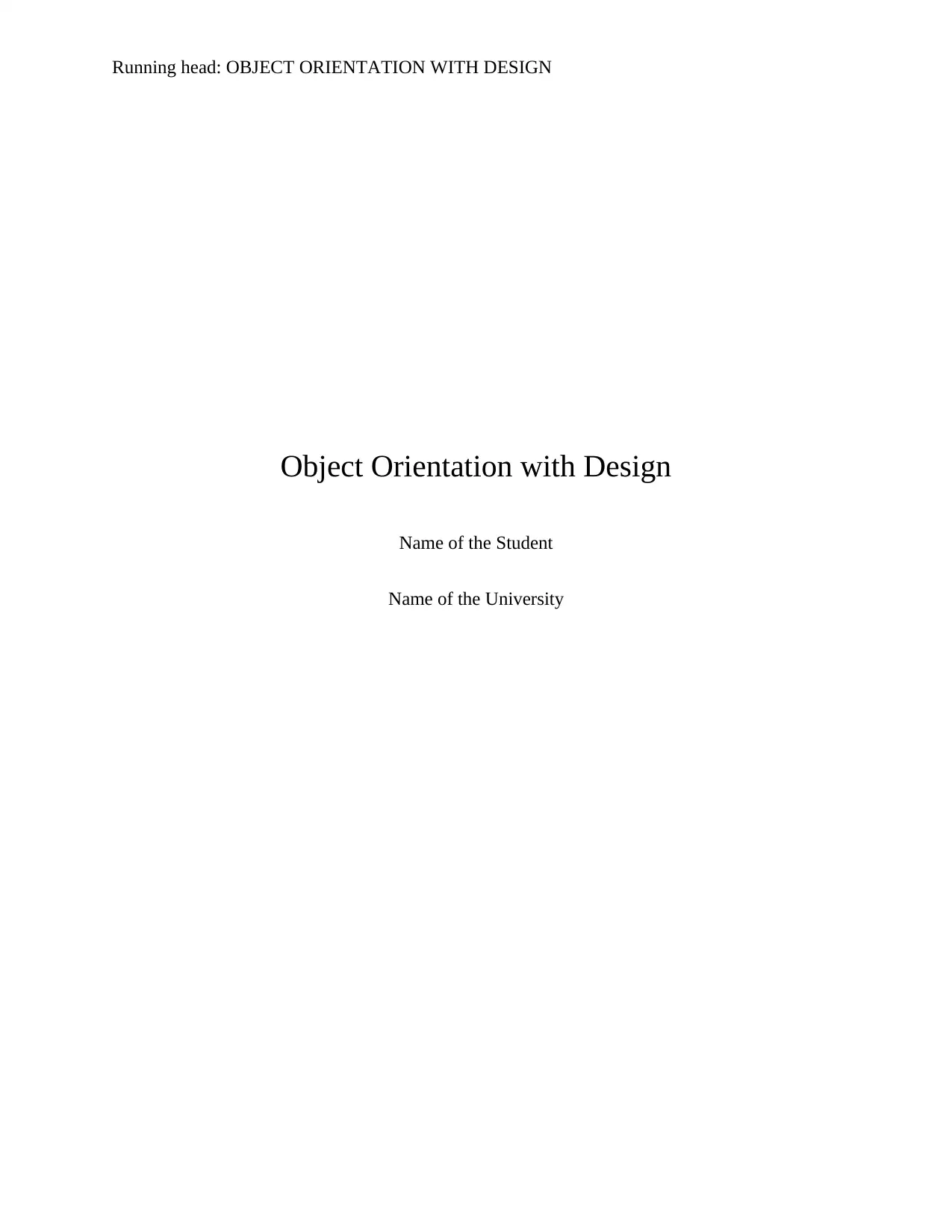
Running head: OBJECT ORIENTATION WITH DESIGN
Object Orientation with Design
Name of the Student
Name of the University
Object Orientation with Design
Name of the Student
Name of the University
Paraphrase This Document
Need a fresh take? Get an instant paraphrase of this document with our AI Paraphraser
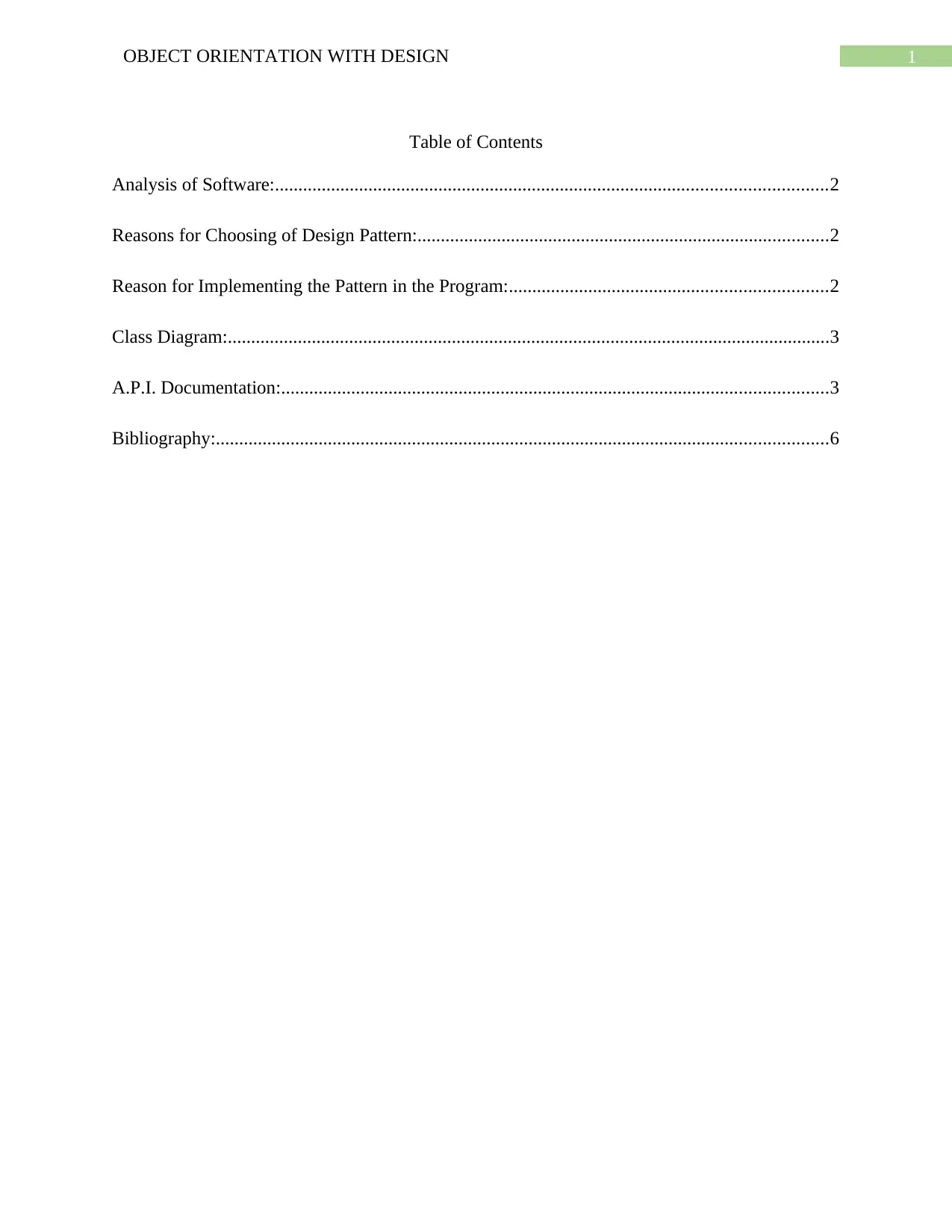
1OBJECT ORIENTATION WITH DESIGN
Table of Contents
Analysis of Software:......................................................................................................................2
Reasons for Choosing of Design Pattern:........................................................................................2
Reason for Implementing the Pattern in the Program:....................................................................2
Class Diagram:.................................................................................................................................3
A.P.I. Documentation:.....................................................................................................................3
Bibliography:...................................................................................................................................6
Table of Contents
Analysis of Software:......................................................................................................................2
Reasons for Choosing of Design Pattern:........................................................................................2
Reason for Implementing the Pattern in the Program:....................................................................2
Class Diagram:.................................................................................................................................3
A.P.I. Documentation:.....................................................................................................................3
Bibliography:...................................................................................................................................6
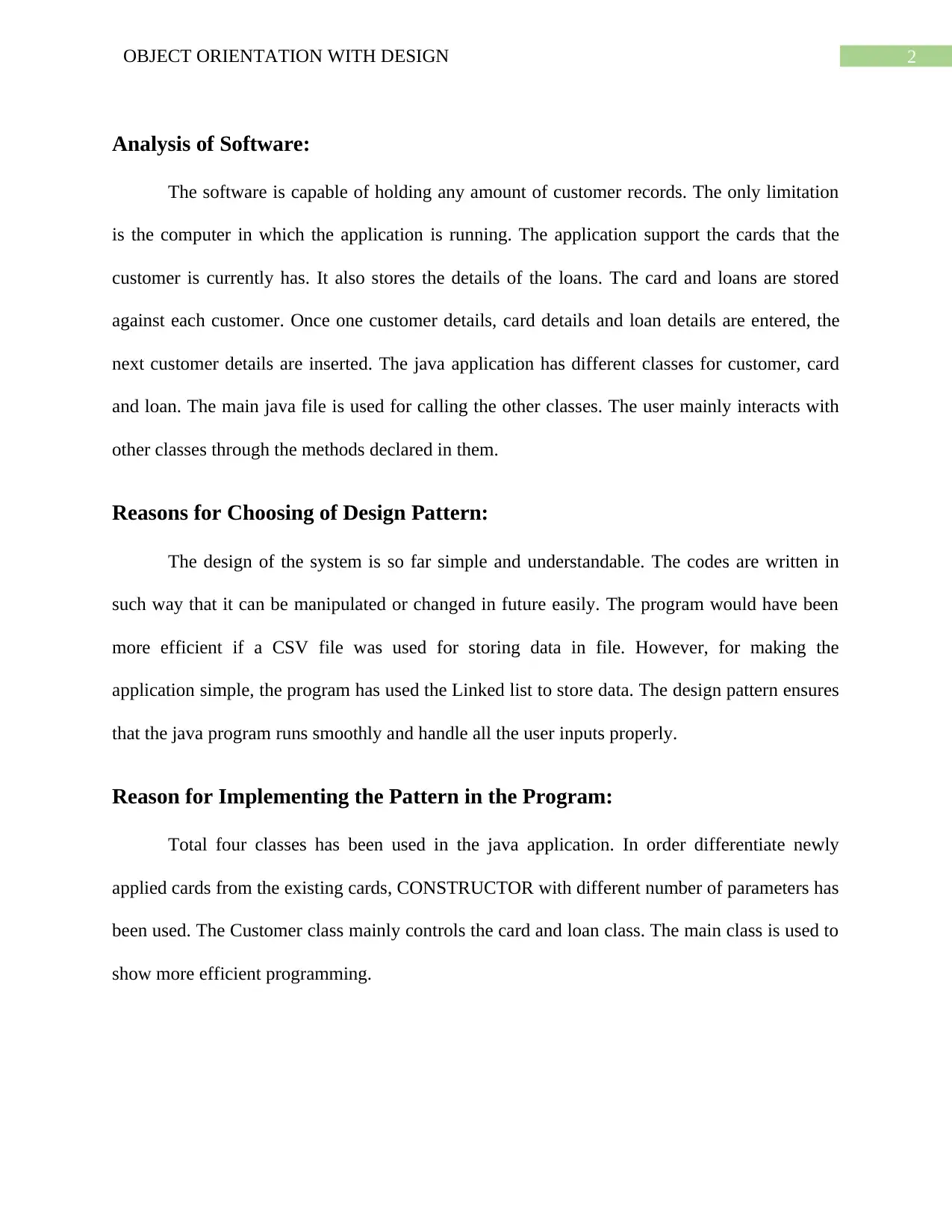
2OBJECT ORIENTATION WITH DESIGN
Analysis of Software:
The software is capable of holding any amount of customer records. The only limitation
is the computer in which the application is running. The application support the cards that the
customer is currently has. It also stores the details of the loans. The card and loans are stored
against each customer. Once one customer details, card details and loan details are entered, the
next customer details are inserted. The java application has different classes for customer, card
and loan. The main java file is used for calling the other classes. The user mainly interacts with
other classes through the methods declared in them.
Reasons for Choosing of Design Pattern:
The design of the system is so far simple and understandable. The codes are written in
such way that it can be manipulated or changed in future easily. The program would have been
more efficient if a CSV file was used for storing data in file. However, for making the
application simple, the program has used the Linked list to store data. The design pattern ensures
that the java program runs smoothly and handle all the user inputs properly.
Reason for Implementing the Pattern in the Program:
Total four classes has been used in the java application. In order differentiate newly
applied cards from the existing cards, CONSTRUCTOR with different number of parameters has
been used. The Customer class mainly controls the card and loan class. The main class is used to
show more efficient programming.
Analysis of Software:
The software is capable of holding any amount of customer records. The only limitation
is the computer in which the application is running. The application support the cards that the
customer is currently has. It also stores the details of the loans. The card and loans are stored
against each customer. Once one customer details, card details and loan details are entered, the
next customer details are inserted. The java application has different classes for customer, card
and loan. The main java file is used for calling the other classes. The user mainly interacts with
other classes through the methods declared in them.
Reasons for Choosing of Design Pattern:
The design of the system is so far simple and understandable. The codes are written in
such way that it can be manipulated or changed in future easily. The program would have been
more efficient if a CSV file was used for storing data in file. However, for making the
application simple, the program has used the Linked list to store data. The design pattern ensures
that the java program runs smoothly and handle all the user inputs properly.
Reason for Implementing the Pattern in the Program:
Total four classes has been used in the java application. In order differentiate newly
applied cards from the existing cards, CONSTRUCTOR with different number of parameters has
been used. The Customer class mainly controls the card and loan class. The main class is used to
show more efficient programming.
⊘ This is a preview!⊘
Do you want full access?
Subscribe today to unlock all pages.

Trusted by 1+ million students worldwide
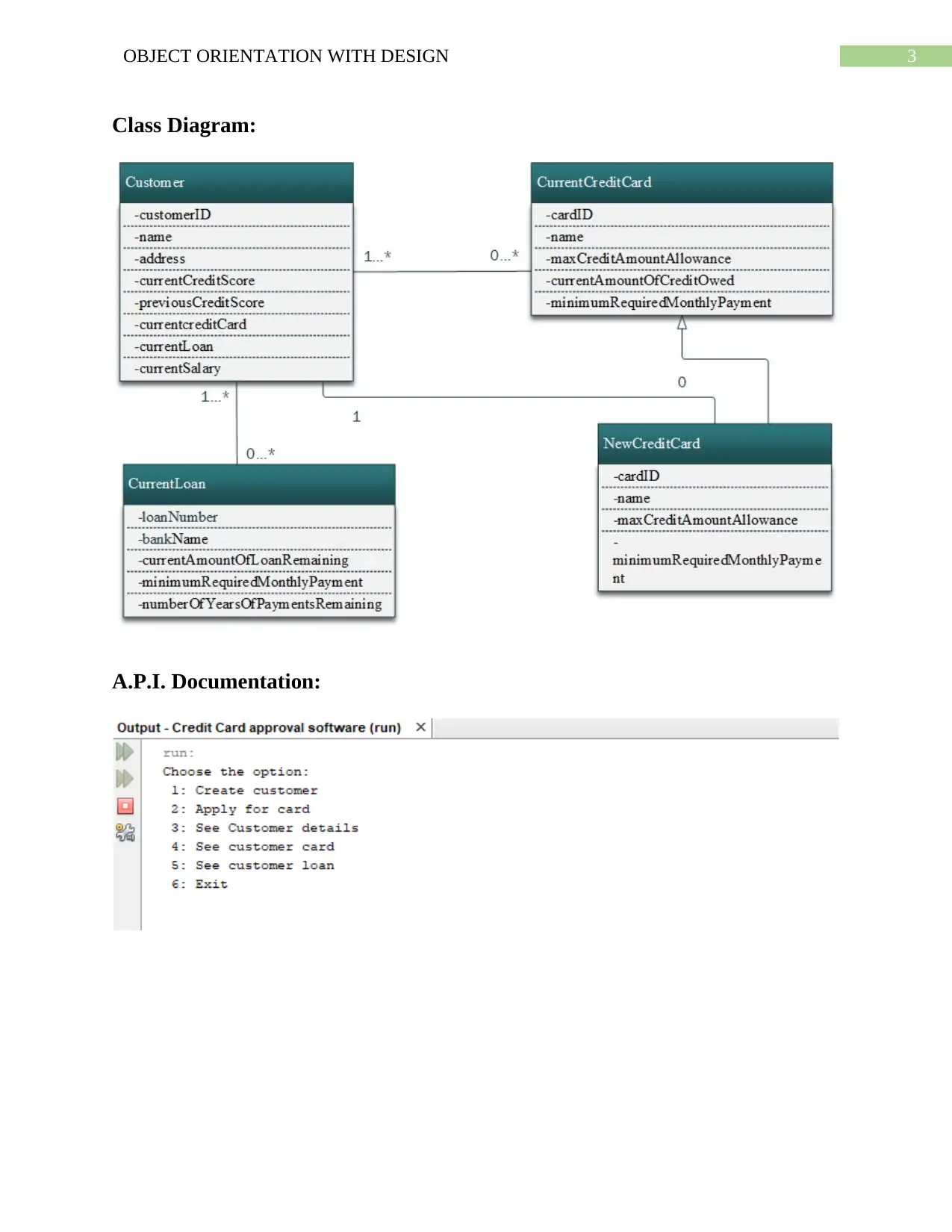
3OBJECT ORIENTATION WITH DESIGN
Class Diagram:
A.P.I. Documentation:
Class Diagram:
A.P.I. Documentation:
Paraphrase This Document
Need a fresh take? Get an instant paraphrase of this document with our AI Paraphraser
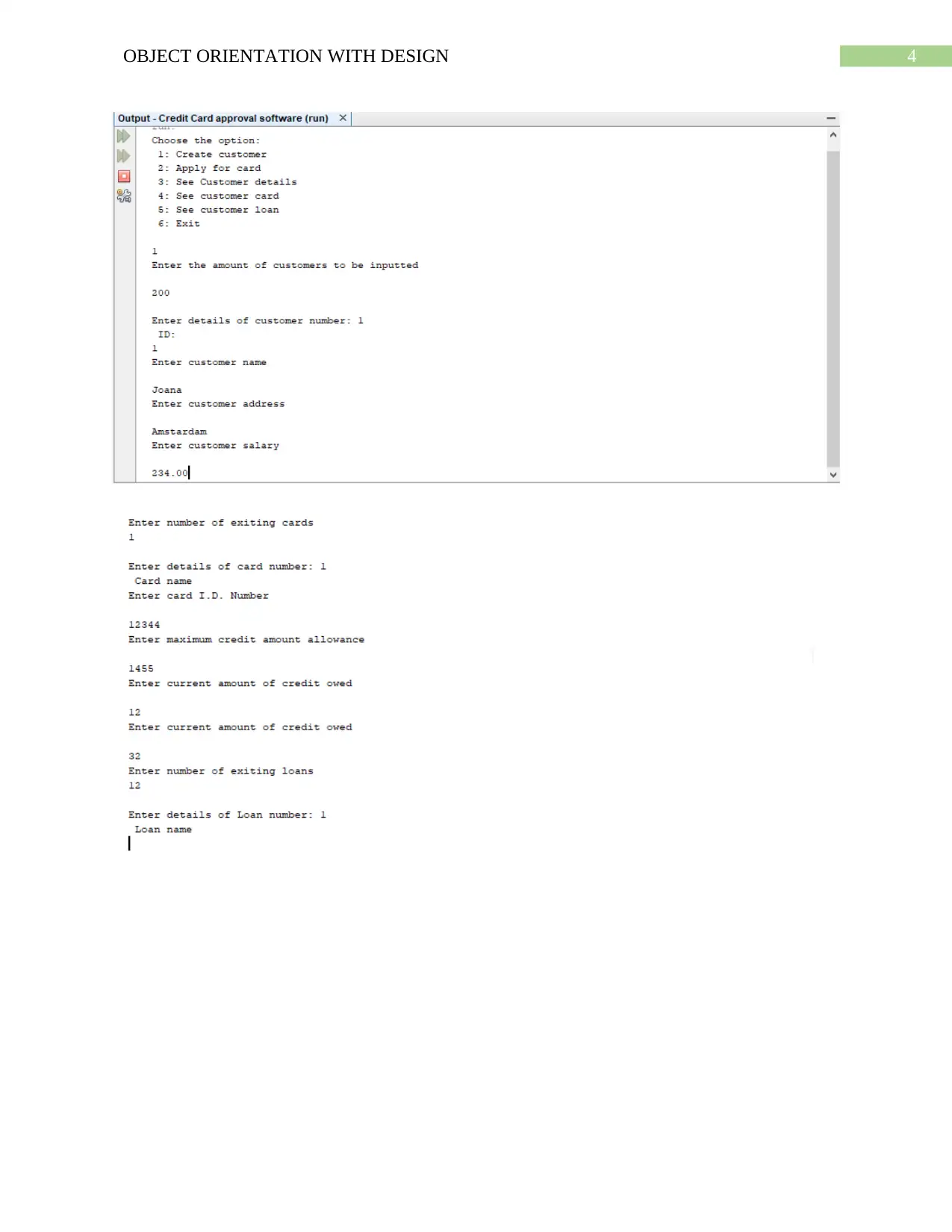
4OBJECT ORIENTATION WITH DESIGN
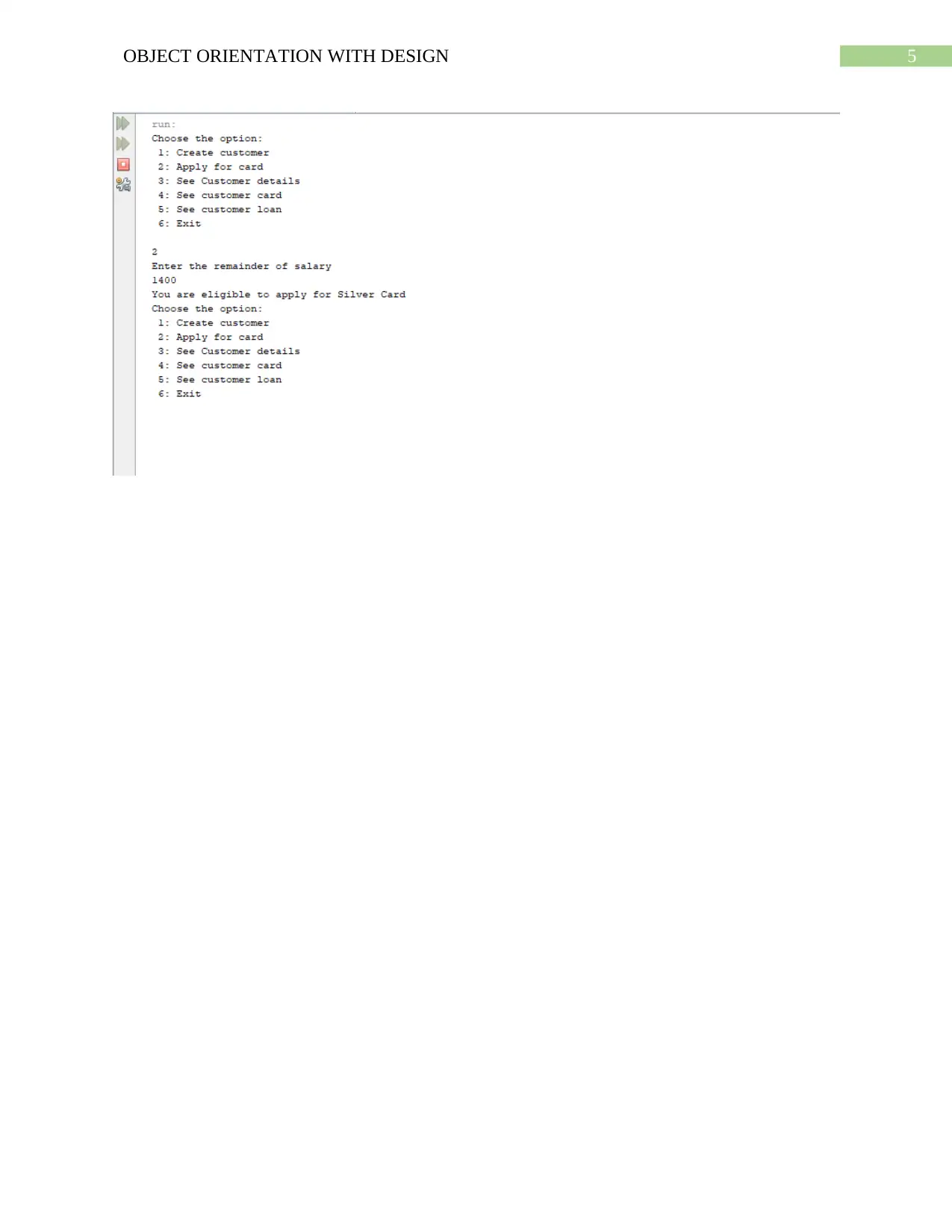
5OBJECT ORIENTATION WITH DESIGN
⊘ This is a preview!⊘
Do you want full access?
Subscribe today to unlock all pages.

Trusted by 1+ million students worldwide
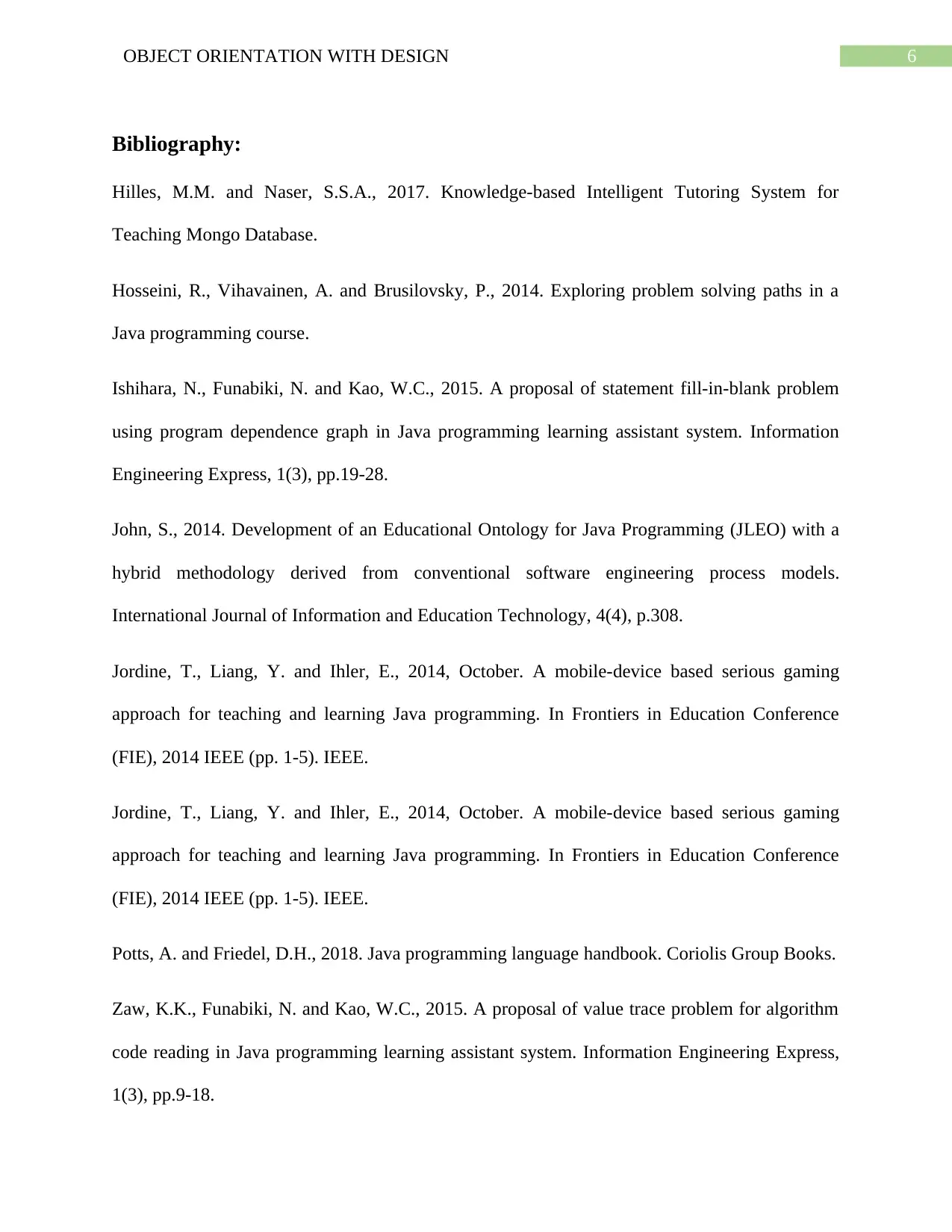
6OBJECT ORIENTATION WITH DESIGN
Bibliography:
Hilles, M.M. and Naser, S.S.A., 2017. Knowledge-based Intelligent Tutoring System for
Teaching Mongo Database.
Hosseini, R., Vihavainen, A. and Brusilovsky, P., 2014. Exploring problem solving paths in a
Java programming course.
Ishihara, N., Funabiki, N. and Kao, W.C., 2015. A proposal of statement fill-in-blank problem
using program dependence graph in Java programming learning assistant system. Information
Engineering Express, 1(3), pp.19-28.
John, S., 2014. Development of an Educational Ontology for Java Programming (JLEO) with a
hybrid methodology derived from conventional software engineering process models.
International Journal of Information and Education Technology, 4(4), p.308.
Jordine, T., Liang, Y. and Ihler, E., 2014, October. A mobile-device based serious gaming
approach for teaching and learning Java programming. In Frontiers in Education Conference
(FIE), 2014 IEEE (pp. 1-5). IEEE.
Jordine, T., Liang, Y. and Ihler, E., 2014, October. A mobile-device based serious gaming
approach for teaching and learning Java programming. In Frontiers in Education Conference
(FIE), 2014 IEEE (pp. 1-5). IEEE.
Potts, A. and Friedel, D.H., 2018. Java programming language handbook. Coriolis Group Books.
Zaw, K.K., Funabiki, N. and Kao, W.C., 2015. A proposal of value trace problem for algorithm
code reading in Java programming learning assistant system. Information Engineering Express,
1(3), pp.9-18.
Bibliography:
Hilles, M.M. and Naser, S.S.A., 2017. Knowledge-based Intelligent Tutoring System for
Teaching Mongo Database.
Hosseini, R., Vihavainen, A. and Brusilovsky, P., 2014. Exploring problem solving paths in a
Java programming course.
Ishihara, N., Funabiki, N. and Kao, W.C., 2015. A proposal of statement fill-in-blank problem
using program dependence graph in Java programming learning assistant system. Information
Engineering Express, 1(3), pp.19-28.
John, S., 2014. Development of an Educational Ontology for Java Programming (JLEO) with a
hybrid methodology derived from conventional software engineering process models.
International Journal of Information and Education Technology, 4(4), p.308.
Jordine, T., Liang, Y. and Ihler, E., 2014, October. A mobile-device based serious gaming
approach for teaching and learning Java programming. In Frontiers in Education Conference
(FIE), 2014 IEEE (pp. 1-5). IEEE.
Jordine, T., Liang, Y. and Ihler, E., 2014, October. A mobile-device based serious gaming
approach for teaching and learning Java programming. In Frontiers in Education Conference
(FIE), 2014 IEEE (pp. 1-5). IEEE.
Potts, A. and Friedel, D.H., 2018. Java programming language handbook. Coriolis Group Books.
Zaw, K.K., Funabiki, N. and Kao, W.C., 2015. A proposal of value trace problem for algorithm
code reading in Java programming learning assistant system. Information Engineering Express,
1(3), pp.9-18.
1 out of 7
Your All-in-One AI-Powered Toolkit for Academic Success.
+13062052269
info@desklib.com
Available 24*7 on WhatsApp / Email
![[object Object]](/_next/static/media/star-bottom.7253800d.svg)
Unlock your academic potential
Copyright © 2020–2025 A2Z Services. All Rights Reserved. Developed and managed by ZUCOL.


